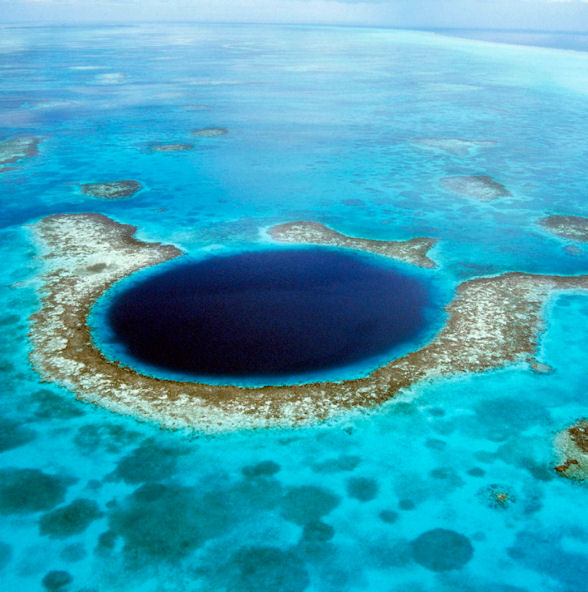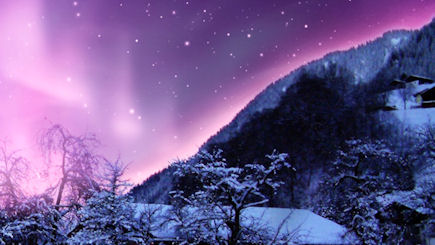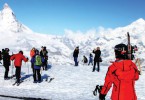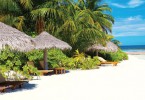This article first appeared in the Nov/Dec 2015 issue of WGM.
We all recognize the world’s major tourist attractions, with millions swarming to see iconic sights such as Paris’ Eiffel Tower, New York’s Empire State Building and the Great Wall of China each year.

But there is no building or man-made structure on the planet that can compare to the awe inspiring wonders of the natural world. Be it their epic scale, unrivalled beauty or seemingly supernatural qualities, these are the phenomenon that provide a glimpse into the infinite universe around us.
There is no shortage of spectacular natural scenery to be found among Earth’s deserts, mountains, forests and oceans but there are a special few dotted around the globe that The Eagle considers the most mind-blowing of all. Here are his Top 5 natural wonders!
1. The Northern Lights.
All the spectacular stage shows in all the casinos around the world pale into insignificance compared to the incredible natural wonder that is the Northern Lights. A natural light display that dances across the sky above the north pole in a breathtaking display of color, the Northern Lights – officially called Aurora Borealis – are caused by electrically charged particles from the sun colliding with atoms in the earth’s atmosphere.

Although they occur year round, the best months to witness them are January through March with their long, dark nights. Greenland, Alaska, northern Canada and Siberia are among the places sitting inside the so-called “auroral zone” where the Northern Lights can be spotted but for a truly unforgettable experience we recommend either Norway’s Svalbard or Kakslauttanen in Finland.
Svalbard – a group of islands midway between Norway and the North Pole – is a little tricky to get to but has the advantage of being about as far north as civilization gets with zero daylight between November and January. For a more luxurious experience, Kakslauttanen is renowned for its heated “igloos” – small domed huts with clear glass ceilings from which to watch the Northern Lights throughout the night!
2. Mount Everest.
Arguably the most famous natural landmark on the planet, Mt Everest is the world’s tallest mountain at 8,848 metres above sea level.
One of just 14 peaks in the world rising above 8,000 metres, it is the star attraction of the Himalayan mountain range which lures two-and-a-half million visitors across the region annually. Incredibly, around 40,000 people make the trip to Everest Base Camp each year with around 600 of them attempting to summit.

The good news is that you don’t need to go anywhere near the mountain itself to take in Everest’s grandeur with all sorts of Himalayan trekking tours available for those who want to witness its grandeur without having to do any actual climbing.
3. Great Blue Hole.
Some of the world’s most incredible features can be found underwater and among the most peculiar is the Great Blue Hole off the coast of Belize in Central America.
Part of the Belize Barrier Reef, it is basically a sinkhole that formed thousands of years ago and was then flooded as ocean levels around the world began to rise. Its shallowest edge now lies 21 metres below the surface.

The Great Blue Hole is the world’s largest submarine sinkhole in terms of diameter – measuring 300 metres across – and is a favorite destination for scuba divers given the array of sea life it attracts. Measuring 124 metres deep, the Great Blue Hole also happens to be the only blue hole visible from space, although we suggest chartering a boat instead!
4. Eye of the Sahara.
The intense heat, shifting winds and erosive sands that typify the world’s deserts can cause some incredible structures to form over time, but none are quite as unusual as the Richat structure – more affectionately called the Eye of the Sahara.
Located near Ouadane in Mauritania, the Eye of the Sahara is a massive circular bullseye measuring 40 kilometres in diameter and featuring two almost equidistant concentric rings.

But most intriguing is the fact that no one is quite sure how it was formed. Originally believed to be an impact crater, the Eye of the Sahara lacks the shattered glass and quartz that typify such an event. Likewise, there is no volcanic rock to signify some sort of volcanic eruption.
Adding to its mystique, the Eye of the Sahara sits just to the south-east of Mauritania’s highest mountain Kediet ej Jill. Almost 1,000 metres high, Kediet ej Jill is mostly made out of magnetite which not only gives the area a blue tinge but makes the use of compasses and magnetic surveying impossible.
5. Marble Caves.
It’s fair to say a pattern has emerged when it comes to our list of natural wonders with none of them particularly easy to get to. We’re sorry to say this one isn’t any better! Located towards the southern end of South America on Chile’s General Carrera Lake, you’ll need to first make your way to the capital city Santiago before catching another flight 800 kilometers south to Coyhaique where a 200 mile drive on dodgy dirt roads awaits. Then you’ll need a boat.

But rest assured, the destination is worth it. The Marble Caves is a network of caves that have gradually formed over the last 6,000 years thanks to the lake’s wave action and is regarded as the most beautiful cave network in the world. Carved into a peninsula of solid marble in the Patagonian Andes, the reflection of the azure waters below create dazzling patterns on the cave’s walls which change depending on the water level and time of year. In spring, the shallower water appears turquoise and creates a shimmering effect on the marble while summer provides a much deeper blue which in turns creates a somewhat eerie effect throughout the cave network.







